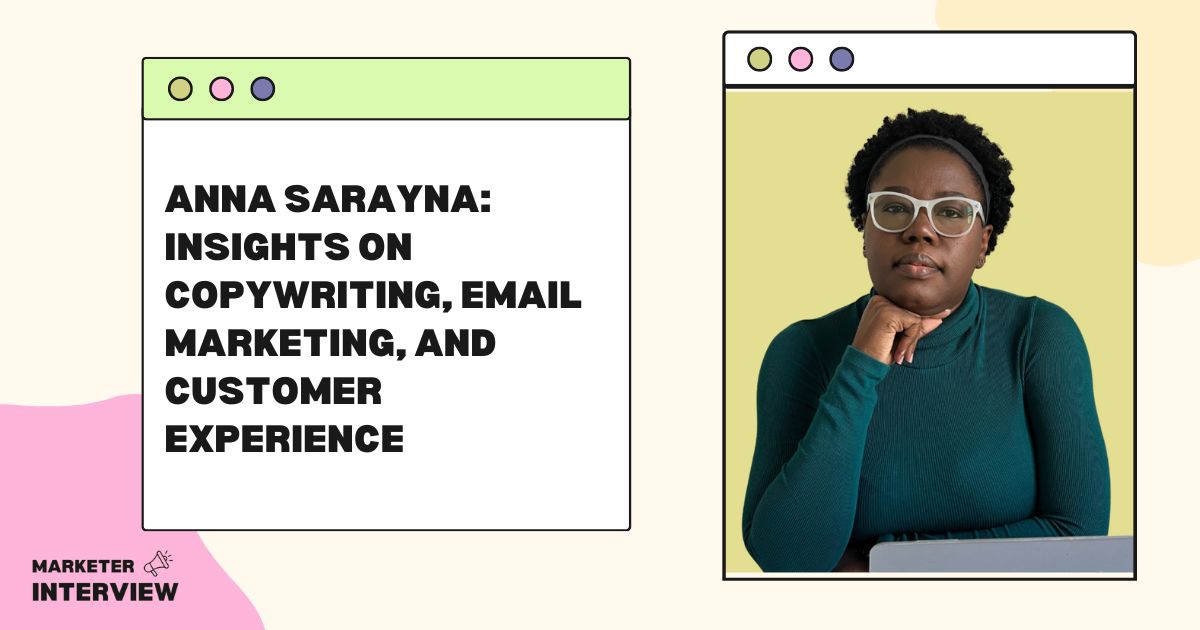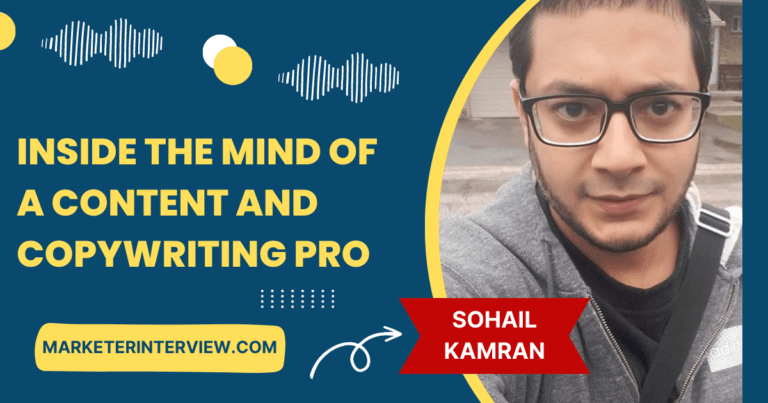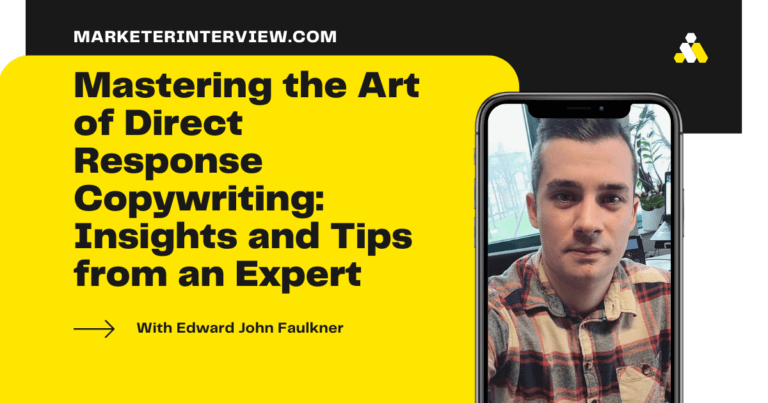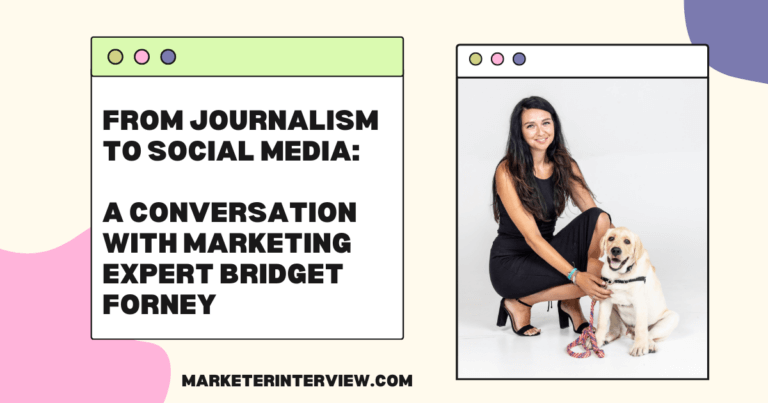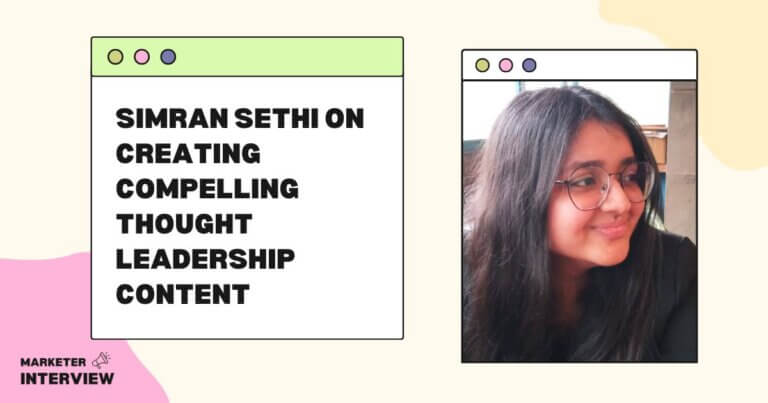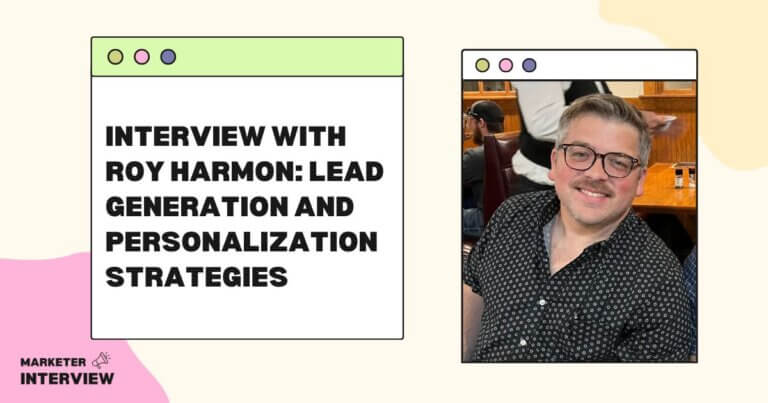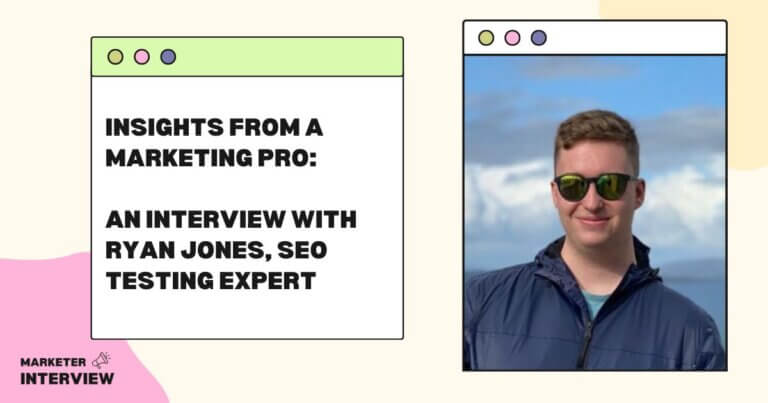Anna Sarayna: Insights on Copywriting, Email Marketing, and Customer Experience
Welcome to Marketer Interview, where we speak to interesting marketers about their career paths and expertise.
Today, we have the pleasure of speaking with Anna Sarayna, a copywriter and email strategist with years of experience working with global brands.
Anna is also knowledgeable in marketing strategy, customer experience, and operations management.
In this interview, we will learn about Anna’s journey into marketing, her experience in copywriting and email marketing, and her insights on the tools and software she uses for her job.
Contents
- 1 Can you tell us about your career journey and how you got into marketing?
- 2 What challenges did you face as a copywriter and email strategist?
- 3 What’s your process for creating successful email marketing campaigns that engage and convert subscribers?
- 4 What is your approach to crafting a compelling brand voice and tone in your copywriting?
- 5 Can you share some tips on how to write effective subject lines that entice readers to open emails?
- 6 What is the most essential element of a successful marketing strategy?
- 7 How do you measure the success of your marketing campaigns?
- 8 What are your favorite tools and software for copywriting and email marketing?
- 9 How do you ensure a positive customer experience through your marketing campaigns?
- 10 Can you tell us about a project you worked on that you are particularly proud of?
Can you tell us about your career journey and how you got into marketing?
I started marketing by way of copyediting and proofreading about 7 years ago.
I was working as an editor at a small publishing firm then the leadership transitioned me into a marketing role after realizing I had a knack for it. A year later, I started freelancing on Fiverr, but I didn’t get serious about my copywriting career until 2018.
In 2018 while traveling full-time in Southeast Asia (#NomadLife), I started working as a remote copywriter with a Canadian digital marketing agency. As a result, I gained experience writing copy for various industries and assets – emails, social media, websites, paid ads, ebooks, chatbots, etc.
I worked my way up to lead Copywriter, managing and training a team of writers who gave me the confidence to launch my brand – AFIWI Marketing – in 2019.
After joining 10X Freelance Copywriter by Joana Wiebe of Copyhackers, I focused my attention on emails, and that’s been my area of focus since, with some web copy sprinkled in.
What challenges did you face as a copywriter and email strategist?
When I started my career, one of the biggest challenges was being based in a developing country, making accepting payments from North American clients very difficult.
I worked around this by registering my business in the US to access a US business bank account and payment solutions like Stripe. (I was fortunate enough to have access to this option, but I realize many copywriters in developing countries don’t.)
I also struggled a lot in the early years with pricing my services for profit. However, programs like “10X Freelance Copywriter” from Copyhackers and “Allergic to Hourly” by business coach Ari Hale helped me improve my craft and properly price and position my packages.
The more I invested in my training, the more confident I became in my skills and experience. Choosing emails as a specialization was also really helpful in boosting my confidence.
Another challenge I’ve experienced with planning and writing email campaigns for clients is getting results to determine the effectiveness of my writing.
This is often the case with many copywriting projects because clients tend to be too busy to find and report the data, especially if they’re not a larger brand with a team responsible for reporting on that data.
And once they’ve paid the project fee, many don’t see the value in sharing that data with the copywriter after the fact.
To work around this, I’ve started sharing an Email Performance Tracker with my clients and the end of projects.
I fill it out with as much info as possible (subject line, preview text, send date, and performance results), then I remind/encourage clients in my project wrap email (and 1 month later) to update and use the tracker as a valuable resource. So far, the response has been good.
What’s your process for creating successful email marketing campaigns that engage and convert subscribers?
I always start every copywriting project with customer research after I get clarity on my client’s goal.
Because email is such a personal medium, I always look for actual customer sentiments and words I can use in emails.
Depending on the client’s industry (Saas, e-commerce, coaching/consulting, etc.), the source of this data may vary. Still, I get most of this info from testimonials, review mining, sales/demo calls, customer interviews, and customer support/success calls with customers.
Once I’ve gathered enough VOC data (if this is a new client, research is usually the most significant chunk of the process), I map the flow of my campaign.
I decide how many emails and sequences I will need, then determine the goal, the ideal CTA (Call To Action) for each, and the ideal delay/send time for each email in the sequence.
I start writing the copy for the individual emails only after I’ve taken care of all that.
I always write my subject lines AFTER my emails, which I always recommend to newer email copywriters and business owners.
I find that it’s easier this way because you can then pull inspiration from the body copy to inform your subject lines.
My final step is usually the editing process and submission to my client for review.
Then, if I’m handling implementation, I usually hop into the client’s ESP (email service provider) to upload, format, send test emails, and schedule the final campaigns once everything is vetted and approved.
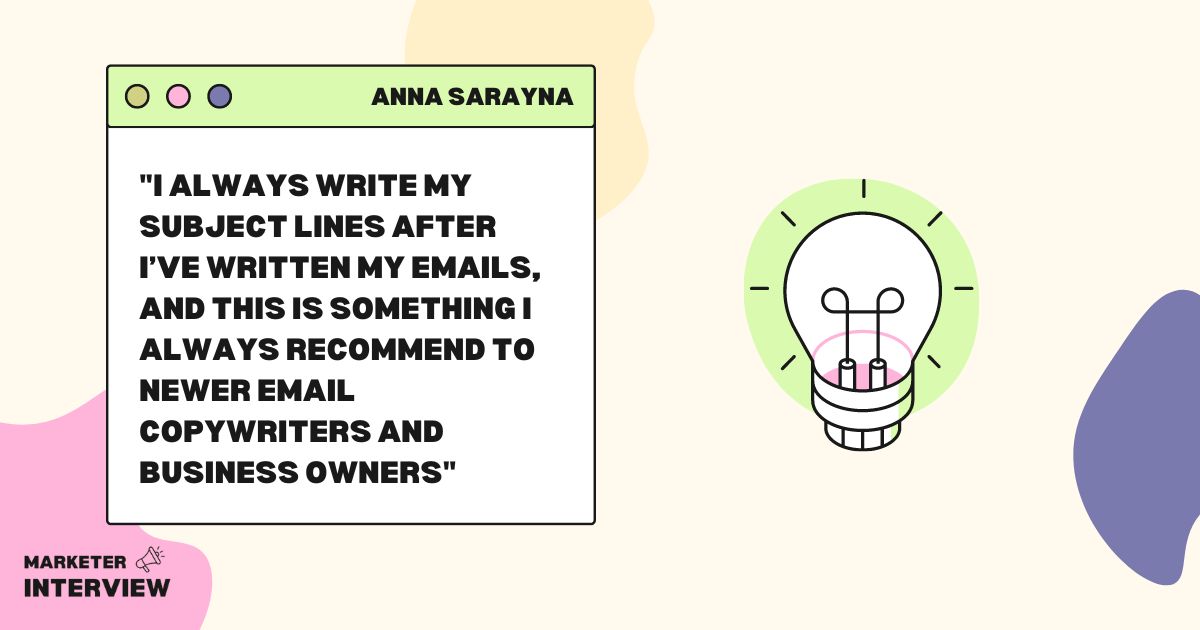
What is your approach to crafting a compelling brand voice and tone in your copywriting?
Working with brands with a solid brand voice guide is more manageable because that document usually informs what I write.
If that document exists, it’s usually a matter of molding the VOC data and everything I write to reflect that voice. I also review existing copy assets to see if they reflect a voice and tone the client is satisfied with.
If a brand doesn’t have a brand voice guide (often the case for smaller brands that I work with in the e-commerce and online service space or even startups), I have a very extensive questionnaire that I go through with clients on a recorded Zoom call.
I use the responses to this questionnaire to create my own internal Copywriting Brief that informs everything I write for the client.
My number one subject line tip is the one I mentioned earlier – always write your email first. This makes getting inspiration for your subject line easier from the email.
I know we love formulas, but only some formulas work. (Sorry to be a buzzkill). Also, the nature of your subject line will vary depending on the goal of your email.
For example, you’re better off using a straightforward subject line for a confirmation or cart close sales email, but you could be more creative with a newsletter email.
Likewise, in most instances, a SaaS onboarding sequence won’t need the kind of subject line creativity that a coach may use in a sales sequence.
That said, here are some general tips I always aim to follow:
- Pique their curiosity (This can be a statement or a question that implies something without giving away the story)
- Make it relatable (Write it like a human, not a robot)
- Make sure it’s relevant to the content of your email (No one likes a bait and switch)
- Include an emoji (One is enough; don’t overdo it with too many)
- Don’t use Re: or Fw: if it’s not a reply or forward (No one likes being duped)
What is the most essential element of a successful marketing strategy?
Effective positioning is the most critical element of a successful marketing strategy.
Whether selling a product or service, articulating what you provide, who you serve, and why your offer is unique is critical to your success in any industry or space.
Once you’ve nailed your positioning, it’s easier for the other pieces, like your “how,” to fall into place. Then you can then determine your channels and the other elements of your strategy.
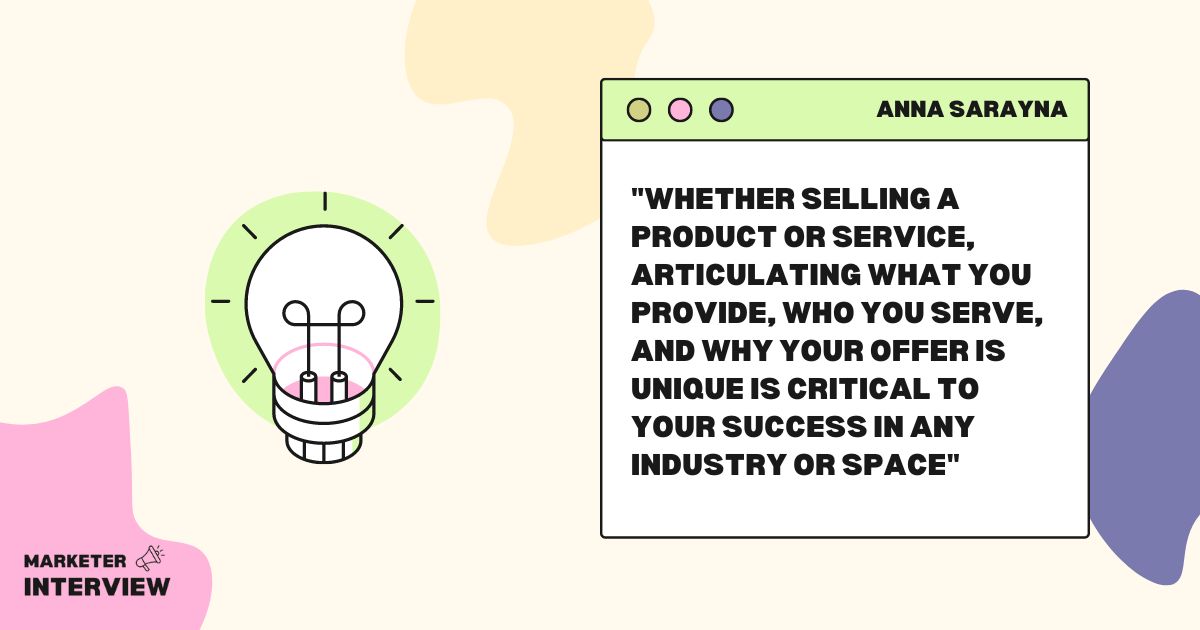
How do you measure the success of your marketing campaigns?
The measurement of success is often dependent on the respective client’s goals.
I write a lot of sales emails for coaching and e-commerce clients, and for many of these clients, sales from emails is the primary goal.
While I track both conversion rate and email click-through rates, I tend to focus more on click-through rates since, in many instances, I have no control over what customers do when they get to a product or sales page if I don’t write the copy for that offer.
I’ve had clients in the SaaS space who were more focused on growing their list with MQLs (Marketing Qualified Leads), so for these clients, the key metric was list growth rate and landing page conversion rates. For these projects, I focused more on copywriting for assets like landing pages and popups.
What are your favorite tools and software for copywriting and email marketing?
I stick to good old Google Docs for copywriting because it allows me to share access with clients when I’m ready for their input.
And Google. I spend a LOT of time Googling – competitor research, customer reviews, social media chatter about a brand, etc.
For email and web copywriting projects, I use Whimsical for my wireframes and for visually mapping email campaigns because it’s very intuitive. (Other wireframing tools overwhelm me, so I stick with what works.)
Wireframes make it easier for me to communicate copy and design decisions to other stakeholders and make it easy for clients to visualize the copy in the intended layout.
For email marketing, I’ve managed client accounts on ConvertKit, MailChimp, ActiveCampaign, and Intercom, but my email newsletter is now on Convertkit (I recently switched from MailerLite). I like ConvertKit because it’s robust without a ridiculous price tag.
How do you ensure a positive customer experience through your marketing campaigns?
I’m always mindful of balancing the client’s goals – higher engagement, more leads, more sales – with the needs of their customers.
It’s easy to focus exclusively on the client, but I’m always thinking about my client’s customers because the best way to serve my client is to make their customers feel valued, respected, and understood.
So when I’m planning email marketing campaigns, I’m thinking about things like:
How many emails are too many emails? Can we say what we need to say without being pushy?
Can we present our solution without making the customer feel wrong about their problem?
How do we respect their time and the information they shared?
Can we deliver on all the promises we’re making?
Whether I’m trying to figure out how many touchpoints to include or what to write in the copy, I always consider balancing these variables.
Can you tell us about a project you worked on that you are particularly proud of?
An e-commerce project comes to mind. A client found me via a blog post and wanted to overhaul her email marketing efforts, but first, she needed a brand voice guide.
When I delivered the brand voice guide on our Zoom call, she was speechless. She eventually said she’s never seen her brand presented like this on paper, which really blew her mind. That was incredible validation for me.
When we moved on to the emails, I cleaned her list and implemented a welcome sequence that started generating revenue as soon as it was sent to her existing subscribers.
That was further validation that the brand voice guide was practical because all the emails were informed by that document, and within days of sending it to her list, she recovered her investment with that one send. And those emails will continue to generate revenue for months to come.
